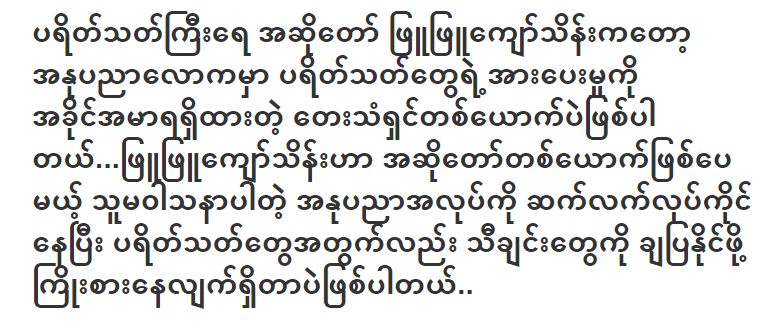









Hey there, fellow art enthusiasts! Ever wondered how the world of digital art manages to keep its integrity intact in the vast sea of the internet? Well, let me introduce you to a game-changer: blockchain. Yeah, you heard it right, the same technology that powers cryptocurrencies like Bitcoin is revolutionizing the art world too. So, buckle up as we dive into the fascinating realm where technology meets creativity!
H1: The Digital Art Revolution
Picture this: you stumble upon a breathtaking digital artwork online, and you’re instantly captivated. But wait, how can you be sure it’s not just a copycat or a knockoff? This is where blockchain swoops in like a superhero, donning its cape of authenticity and ownership.
H2: What is Blockchain Anyway?
First things first, let’s demystify blockchain. Think of it as a digital ledger, a chain of blocks (hence the name) that records transactions in a secure and transparent manner. Each block contains a unique cryptographic hash, linking it to the previous block, forming an immutable chain. It’s like a digital fingerprint that can’t be tampered with.
H2: Digital Art and Its Dilemmas
Now, let’s zoom into the world of digital art. Unlike traditional art forms, digital artworks face a unique set of challenges, particularly when it comes to authenticity and ownership. With the ease of copying and distributing digital files, how can artists ensure that their work remains authentic and that they retain control over it?
H1: Blockchain to the Rescue
Enter blockchain, the ultimate solution to the digital art conundrum. By leveraging blockchain technology, artists can create digital certificates of authenticity, known as non-fungible tokens (NFTs), for their artworks. These NFTs are stored on the blockchain, providing irrefutable proof of ownership and authenticity.
H2: Non-Fungible Tokens (NFTs): Unlocking Digital Art’s Potential
NFTs are like golden tickets in the world of digital art. Each NFT is unique and indivisible, representing ownership of a specific digital asset. Think of it as a digital deed, stamped and sealed on the blockchain. With NFTs, artists can monetize their digital creations, while collectors can verify the authenticity and provenance of their acquisitions.
H2: The Power of Decentralization
One of the key strengths of blockchain is its decentralized nature. Unlike traditional centralized systems, where a single authority holds control, blockchain operates on a distributed network of nodes. This decentralization ensures that no single entity can manipulate or alter the records stored on the blockchain, enhancing trust and transparency.
H1: Transparency and Traceability
In a world plagued by forgeries and frauds, transparency is paramount. Blockchain provides a transparent and immutable record of every transaction, allowing anyone to trace the journey of an artwork from its creation to its current owner. This transparency not only fosters trust within the art community but also helps combat issues like plagiarism and art theft.
H2: Fighting Fraud with Technology
Fraudsters beware! Blockchain technology makes it nearly impossible to counterfeit NFTs or alter ownership records without leaving a trace. Each transaction is securely recorded on the blockchain, leaving behind a digital trail that can be easily verified. It’s like having a digital watchdog, tirelessly guarding the integrity of digital art.
H2: Empowering Artists and Collectors
Beyond thwarting fraud, blockchain empowers artists and collectors alike. Artists can receive royalties automatically whenever their artworks are resold, thanks to smart contracts encoded on the blockchain. Meanwhile, collectors can rest assured knowing that their investments are protected by the immutable nature of blockchain technology.
H1: Challenges and Opportunities
While blockchain holds immense promise for the digital art world, it’s not without its challenges. Scalability, energy consumption, and environmental concerns are just a few hurdles that need to be addressed. However, with innovation and collaboration, these challenges can be overcome, unlocking new opportunities for artists and collectors alike.
H2: Addressing Environmental Concerns
One of the criticisms leveled against blockchain is its energy-intensive nature, particularly in the case of proof-of-work consensus mechanisms. However, initiatives like eco-friendly blockchains and proof-of-stake algorithms are paving the way for a more sustainable future. By harnessing renewable energy sources and optimizing algorithms, blockchain can minimize its environmental footprint.
H2: Navigating Legal and Regulatory Frameworks
As blockchain technology continues to disrupt traditional industries, legal and regulatory frameworks must evolve to keep pace. Questions surrounding copyright, intellectual property rights, and taxation in the realm of digital art remain largely uncharted territory. Clear and standardized guidelines are essential to ensure fair and equitable practices for all stakeholders involved.
H1: The Future of Digital Art
In the ever-evolving landscape of digital art, one thing is certain: blockchain is here to stay. As technology advances and adoption grows, we can expect to see further integration of blockchain solutions across the art industry. From digital galleries and marketplaces to virtual reality experiences, the possibilities are endless.
H2: Beyond the Canvas: Exploring New Frontiers
With blockchain at the helm, digital art is breaking free from the confines of traditional galleries and auction houses. Virtual reality platforms are transforming the way we experience and interact with art, blurring the lines between the physical and digital realms. Who knows, maybe one day we’ll attend art exhibitions in cyberspace, exploring virtual galleries from the comfort of our homes.
In conclusion, blockchain technology is revolutionizing the world of digital art by ensuring authenticity, ownership, and transparency. Through non-fungible tokens and decentralized networks, artists and collectors alike can navigate the digital landscape with confidence. While challenges remain, the potential for innovation and creativity knows no bounds. So, let’s raise our virtual glasses to a future where art and technology collide in beautiful harmony. Cheers to the blockchain revolution!